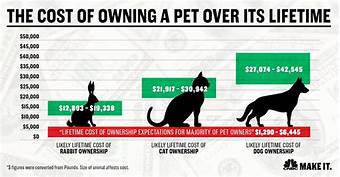How to Start a Pet Hospice
As a pet owner, saying goodbye to a beloved companion is one of the hardest experiences you'll ever face. When your pet is diagnosed with a terminal illness, providing them with the best possible end-of-life care is essential. One way to do this is to start a pet hospice.

What is Pet Hospice?
Pet hospice is a program of care that provides comfort and support to animals facing a terminal illness. The goal of pet hospice is to help animals live their last days in as much comfort and dignity as possible.
Benefits of Pet Hospice
There are many benefits to starting a pet hospice, including:
- Your pet will receive high-quality, compassionate care.
- You can keep your pet at home, surrounded by loved ones.
- You can make decisions about your pet's care.
- You can grieve the loss of your pet in a healthy way.
How to Start a Pet Hospice
Starting a pet hospice can be a rewarding experience, but it also requires a lot of planning and effort. Here are some steps to get you started:
1. Decide on the Scope of Your Hospice
The first step is to decide what kind of hospice you want to offer. Do you want to provide care for pets of all ages and sizes? Or do you want to focus on a specific type of pet, such as dogs or cats?
You also need to decide whether you want to provide hospice care in a home setting or in a veterinary clinic.
2. Get Training and Certification
Once you've decided on the scope of your hospice, you'll need to get training and certification. There are several organizations that offer pet hospice training, such as the International Association for Animal Hospice and Palliative Care (IAAHPC) and the American Veterinary Medical Association (AVMA).
3. Find a Location
If you're planning to provide hospice care in a home setting, you'll need to find a suitable location. The location should be quiet and comfortable, with easy access to veterinary care.
If you're planning to provide hospice care in a veterinary clinic, you'll need to work with the clinic staff to set up a dedicated hospice room or area.
4. Purchase Supplies and Equipment
You'll need to purchase a variety of supplies and equipment to provide hospice care, such as:
- Medical supplies, such as bandages, syringes, and medications
- Comfort items, such as soft bedding, blankets, and pillows
- Nutritional supplements and treats
- Equipment, such as wheelchairs, ramps, and slings
5. Hire Staff
If you're planning to provide hospice care on a large scale, you'll need to hire staff to help you. This may include veterinarians, veterinary technicians, nurses, and social workers.
6. Develop Policies and Procedures
You'll need to develop policies and procedures for your pet hospice, such as:
- Admission criteria
- Care plans
- Medication protocols
- Discharge planning
- Grieving support
7. Market Your Pet Hospice
Once you're up and running, you'll need to market your pet hospice to potential clients. This can be done through advertising, social media, and word-of-mouth.
8. Provide Ongoing Care and Support
Once you've admitted a pet to your hospice, you'll need to provide ongoing care and support. This may include administering medications, providing nutritional support, and offering emotional support to the pet's family.
9. Evaluate Your Services
You'll need to evaluate your services on a regular basis to ensure that you're meeting the needs of your clients. This may include collecting feedback from clients and staff, and reviewing your policies and procedures.
10. Stay Up-to-Date on Developments in Pet Hospice
The field of pet hospice is constantly changing, so it's important to stay up-to-date on the latest developments. This may include attending conferences, reading journals, and networking with other pet hospice providers.
Declaration: All article resources on this website, unless otherwise specified or labeled, are collected from online resources. If the content on this website infringes on the legitimate rights and interests of the original author, you can contact this website to delete it.




